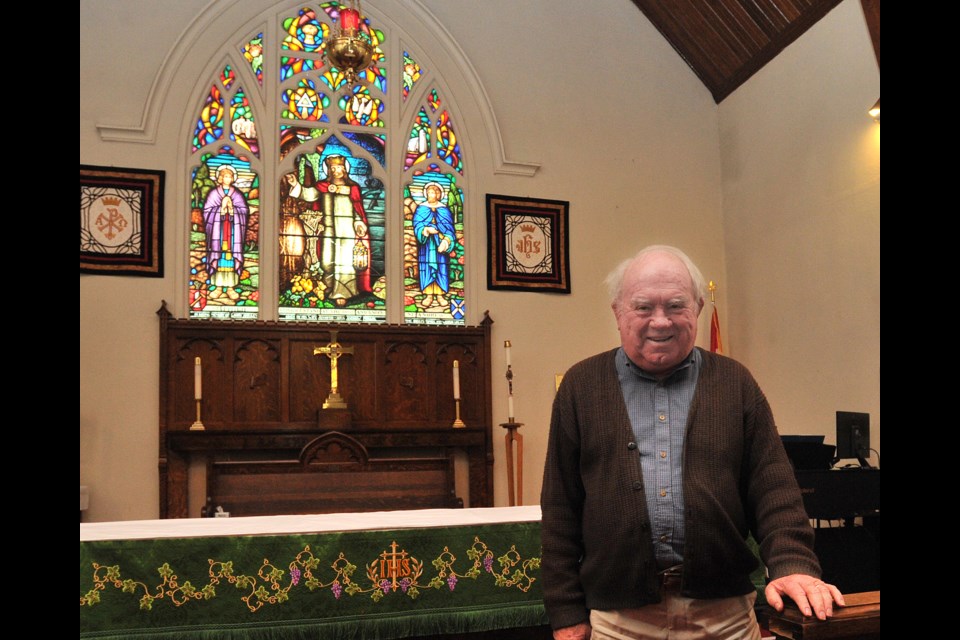One of Barrie’s newest churches is also one of its oldest parishes.
With a long history of local families, politicians and reverends, St. Paul’s Anglican Church — located at Mapleview Drive and Yonge Street in the city’s south end — came into the fold of Barrie churches after the Innisfil-to-Barrie land transfer (some refer to it as annexation, but that depends upon who you might be talking to), which came into effect on Jan. 1, 2010.
But regardless of which town or city it is in — or was in — St. Paul’s has a long history of service to its parishioners and the community.
According to the church’s 166th anniversary history book, dated 2017, in 1851 a travelling missionary, Rev. John Fletcher, was among the first to begin spreading the good word from the site of the first church on the site.
And those words continue to this day.
A growing congregation eventually required a new building.
"A rectory was built and soon a new church was needed," according to the St. Paul’s history book. "It was built on the same site as the first church and was opened in 1875 by Bishop Bethune in the presence of the Rt. Hon. Sir John A. and Lady Macdonald."
Hmmm….a prime minister. Not bad.
But in March 1914, when the First World War was ramping up and global conflict was imminent, St. Paul’s had its own tragedy.
A fire all but destroyed the structure.
But through faith and determination, a cornerstone for the new church was laid in July of that year and the first service followed in November.
That structure is with us to this day, along with some additions made over the years that make it a community gathering place.
And not just for church-related activities, although there is plenty of that, according to George Timpson, St. Paul’s deputy rector's warden.
“Residents have discovered us and they really like our parish hall for having public meetings,” he says, after the Golden K Kiwanis of Barrie club have concluded their meeting earlier this week.
“People who are not necessarily members of the church come in,” Timpson says. “We are home to the Earth Drum Group every week, a Tai-Chi group, Irish dancing. We have a group of seniors who love to play darts on a Wednesday afternoon and another dance group that comes in on Tuesday nights.
“In February, we have a pancake dinner. In March, we are celebrating St. Patrick’s Day. We’ve got something everything month.
“It fits into the sense of community,” he adds.
The 70 or so parishioners continue to gather every week, but that number could grow, Timpson suggests, alluding to the massive and impending development taking place around the church.
The Barrie-Innisfil Boundary Adjustment Act, 2009 was passed by the provincial legislative assembly in December 2009 and transferred approximately 2,300 hectares of land to the City of Barrie from the Town of Innisfil.
“With all these hundreds and hundreds of houses being built around here, we’d like to get some Anglicans here to support the church,” Timpson says with a chuckle. “We are trying to do things that will attract young people. Our congregation is basically older, as one would expect, but with the new subdivisions coming in we’re upgrading our website this year to make it more appealing to younger families.”
St. Paul’s has second and third generations of families who call it home on Sundays.
Many of the family names associated with the church over the years might be familiar to Barrie, Innisfil, Essa Township or Simcoe County residents.
Innisfil resident Donna Wice, whose family has a longtime connection with St. Paul’s, is a member of the Stroud St. James United Church congregation, and says churches were a place for people to connect with each other.
“Churches were important — baptisms, confirmations — the whole symbolism of belonging centred on the church. Those were all Christian symbols of belonging to the church along with potluck dinners, the celebrations of sad times and happy times at the church.
“There weren’t always community halls so (churches) were the centre of activity.”
St. Paul’s Anglican Church was recently recognized during the Barrie Heritage Awards in the institutional category.
“Under the Ontario Heritage Act, the city can identify buildings, properties, individual trees, or entire landscapes and viewscapes as having heritage value,” says Tomasz Wierzba, a City of Barrie planner who is also a heritage advisory committee liaison under the Ontario Heritage Act.
Designating or listing properties on the Municipal Heritage Register is important as it helps preserve our link to the past; our built cultural heritage tells our story, of where we came from and what we did.”



